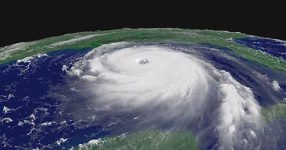Richard Hammond’s documentary, “Temperature: The Driving Force”, delves into the mysterious workings of one of the most powerful and captivating forces on Earth – weather. Despite its influence shaping our daily lives, the intricacies of weather often elude our understanding. Hammond takes on the challenge of unraveling these secrets through a series of ambitious experiments, aiming to simplify the complexities of weather into three fundamental elements: wind, water, and temperature.
The Significance of Temperature:
In this program, Hammond emphasizes the pivotal role of temperature in weather formation. He challenges the common perception that the Sun is solely responsible for weather patterns, asserting that the crucial factor lies in the heat generated from the Earth’s surface. Exploring how uneven heating creates thermals – rising columns of warm air – Hammond showcases how these thermals drive winds and contribute to cloud formation.
Creating Thermals through Experiments:
To illustrate the concept of thermals, Hammond orchestrates a unique experiment using specially built metal tables as hot surfaces. With 14 gas canisters and 18 ipav burners, the tables are heated to extreme temperatures, demonstrating how rising columns of air, or thermals, are essential components of weather. The experiment goes beyond creating a mere spectacle, aiming to showcase the intricacies of weather phenomena on a smaller scale.
Journey to the Sahara:
Hammond transitions to the Sahara Desert, exploring the phenomenon of dust storms and their impact on weather patterns. Astonishingly, dust from the Sahara travels over 2,000 miles, affecting regions far beyond its origin. Hammond employs analogies and visual demonstrations to elucidate the process of dust transport through the atmosphere, revealing the intricate interplay between wind, dust particles, and the Earth’s surface.
Uncovering the Role of Deserts:
Delving deeper into the consequences of uneven heating, the documentary explores how deserts are formed. The Sahara, with its vast expanse of sand, becomes a focal point for understanding how thermals lift water into the atmosphere. As Hammond uncovers the link between thermals, clouds, and desert formation, the viewer gains insight into the interconnectedness of weather phenomena on a global scale.
Dust Sampling Experiment:
Hammond engages in a hands-on experiment, utilizing a cyclone sampler attached to a balloon to collect dust particles from the atmosphere. This experiment showcases the role of natural traps, such as rocky terrain, in retaining dust. The collected data highlights the significance of dust in weather processes, emphasizing its contribution to cloud formation and the creation of arid landscapes.
Freezing Rain and Snow Formation:
Transitioning to colder climates, Hammond investigates freezing rain, a weather phenomenon dependent on temperature conditions. He demonstrates the process by spraying distilled water in freezing temperatures, creating a visually striking representation of freezing rain. The documentary then explores the transformation of snowflakes, illustrating the intricate stages of their development under varying temperature conditions.
Snow Plow Experiment and Sintering Process:
In a unique experiment, Hammond uses a snowplow to compress snow, initiating a process known as sintering. This phenomenon involves the fusion of snowflakes, creating a dense layer of snow. The documentary unveils the scientific intricacies of snow metamorphosis, shedding light on the continuous changes snowflakes undergo even after settling on the ground.
The Mystery of Fog Color:
The documentary takes a detour to address a common curiosity: why is fog white? Hammond provides a clear explanation, linking fog color to the density of water droplets and their ability to block sunlight. Through a simple demonstration involving holes in cardboard, he demystifies the appearance of dark patches in fog.
Thunder and Lightning Phenomena:
Hammond explores the awe-inspiring phenomena of thunder and lightning, delving into the science behind thunderous sounds. Using specialized cameras, he attempts to capture the shockwave produced by lightning, revealing the intensity and complexity of this natural electrical discharge. The documentary culminates in a captivating exploration of the atmospheric forces that generate thunderstorms.
“Temperature: The Driving Force” delivers a comprehensive and captivating exploration of weather phenomena. Through a combination of experiments, visual demonstrations, and scientific explanations, Hammond demystifies the complexities of weather, providing viewers with a newfound appreciation for the forces that shape our world.












